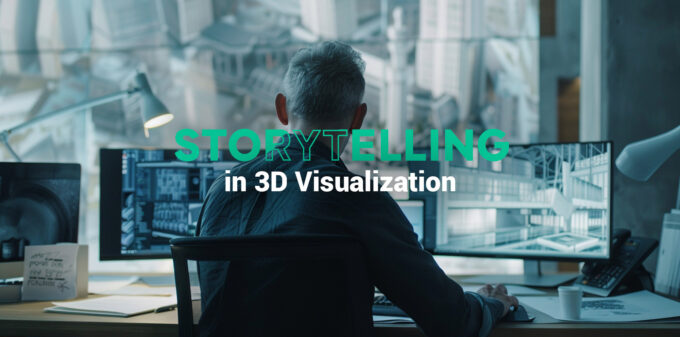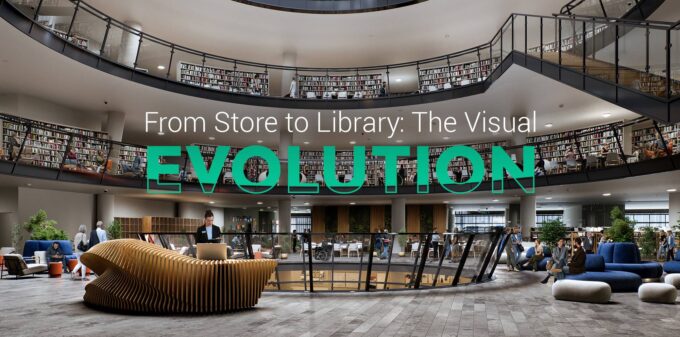
Unveiling the Pros and Cons of 3D Visualization and Photography
In the ever-evolving landscape of modern business, where staying ahead requires constant adaptation, tools like 3D rendering and traditional photography have become pivotal in the visual presentation of products or projects.Even the most traditional and conservative enterprises now feel the impact of social media and the pervasive digitization of business processes. Furthermore, global circumstances, such as the COVID-19 pandemic, compel both large corporations and small online stores to reconsider their operations, embrace loyalty, and explore the integration of digital visual content.
According to data presented by Forbes, consumer expectations regarding the number of images viewed before making online purchase decisions have significantly increased. Since 2016, the number of images per product has risen from three to eight. This sharp surge in visual expectations carries substantial implications for businesses, prompting a reevaluation of image production strategies to align with the evolving preferences of today’s consumers.
This article aims to guide enterprises through the intricate decision-making process, shedding light on the advantages and disadvantages of both 3D rendering and traditional photography. In doing so, we assist companies in navigating the complexities of visual content creation and aligning their strategies with the dynamic expectations of contemporary consumers.
3D or Not to 3D? Exploring the Pros and Cons for Your Business.
Our endeavor is to provide comprehensive insights that aid you in making informed decisions. We’ll guide you to pose the right questions and uncover the answers necessary to steer your business in the direction that aligns perfectly with your goals.
3D visualization:
Pros:
- Materialization of Future Projects
The main advantage of 3D visualization is that it brings a project to life before actual construction or production, at early stages of development like concept, design, planning, prototyping and construction.
This unique capability holds particular significance for architects, architectural firm, interior designers, construction companies, marketing agencies, investors,property brokers, property developers, professional planners, product manufacturers etc. - Flexibility and Control:
In practical terms, the Flexibility and Control aspect of 3D visualization is a game-changer for clients. It’s like having a tool that allows them to fine-tune every detail exactly as they want it. Need to adjust the lighting? Easy. Want to try out different backgrounds? No problem. And all of this can be done without the hassle of reshooting.
When creating 3D visualizations, it is easy to manipulate different angles, backgrounds, lighting types. There is no need to call in additional specialists to customize scenery, lighting, etc. All the client’s wishes can be realized by one artist without leaving his workplace.
- Cost-Effective Iterations:
It is easy and inexpensive to make further changes to finished 3D visualizations. If a customer returns months or even a year later, wanting to show the product against a different background, with different lighting or in alternative materials, these changes can be made quickly and effortlessly. There is no need to transport massive merchandise, arrange lighting, set up elaborate stages or hire additional staff. Everything can be easily accomplished in the digital space, providing unprecedented flexibility and cost-effective iterations. - Unlimited Creativity:
To create visualizations you don’t need complex studio sets. It allows you to let your imagination run wild, to make futuristic designs.
There are also more practical applications. Large objects can not always fit in the studio (such as large industrial machines, construction equipment, medical installations, etc.) . For 3D visualization it is not a problem. The artist will design the object on any desired background. - Advanced Property Presentation Tool:
3D rendering emerges as a valuable asset through tools like Virtual Staging and Digital Renovations. Often, clients may struggle to envision the full potential of the existing property they intend to purchase.Through the use of Virtual Staging, 3D design bridges this gap by offering a visual representation of the property’s possibilities. This not only aids clients in making well-informed decisions but also benefits sellers by swiftly showcasing the property’s advantages, facilitating faster sales.
- Consistency:
One of the standout advantages of 3D visualization is its ability to deliver excellent results consistently, regardless of when modifications or changes are made.
Whether adjustments are needed immediately or months later, 3D rendering guarantees a consistent and high-quality visual presentation, providing a reliable and stable outcome throughout the project’s lifecycle. - Time Efficiency:
Unlike traditional photography, which in most cases requires lengthy preparation involving logisticians, stylists, decorators and studio owners, 3D visualization does not require lengthy advance preparation. Time can be spent on the creative process itself rather than on organizational aspects.
Cons:
- Learning Curve:
Creating high-quality, photorealistic content with 3D visualization requires specialized knowledge and skills. Mastery of 3D modeling and rendering software is critical and takes time to learn and perfect. Despite the initial difficulty of learning, the ultimate benefits in the form of photorealistic visual results make it a worthwhile endeavor for dedicated professionals. - Initial Setup Time:
The process of working with a 3D visualization studio may initially appear time-consuming and complex. Managers and artists require comprehensive information before commencing the creation of 3D visualizations.
However, the time spent collecting and transmitting information is more than worth it.
The end result is versatile, easy to edit even after time has passed, and suitable for different platforms. - Perceived Realism:
Despite their high level of realism, 3D visualizations may be perceived as less authentic by certain viewers compared to traditional photographs. The unconventional nature of 3D renderings might lead some to question their fidelity to reality. However, the quality of this service has reached remarkable heights, with only experts often able to distinguish between a photograph and a meticulously crafted visualization.
This is one of the reasons why you should choose an experienced visualization studio. Only experienced professionals can make the visualization as photorealistic as possible. Talented 3D visualizers are not craftsmen, they are artists.
Photography:
Pros:
- Realism and Authenticity:
The allure of traditional photography lies in its ability to capture the authenticity of real-world scenes. A photograph freezes a moment in time, providing a genuine representation that resonates deeply with viewers. - Intuitive Process:
The intuitive nature of photography appeals to many. It requires less technical expertise compared to the intricate world of 3D rendering. Point, shoot, and capture – a straightforward approach that has stood the test of time. - Human Touch:
Photography exists as an art form as well.Just as talented 3D visualizers create virtual marvels, talented photographers create masterpieces in their industry. The ability to convey emotion, capture candid moments, and emphasize intricate details requires a special talent that sets these images apart.
This artistic skill allows photography to carve out a niche for itself where the digital space may not be able to replicate the deep depth and emotion found in a well-crafted photograph.
Cons:
- Limitations in Manipulation:
The limitations in manipulation loom. Once the photo is taken, making significant changes becomes a challenge. Revisions may demand reshooting, adding a layer of complexity. - Weather and Environmental Constraints:
Environmental factors, especially in outdoor shoots, can be unpredictable. Weather conditions and lighting become variables that demand careful consideration. - Cost of Retakes:
The cost of retakes, both in terms of time and resources, can be substantial. If a shot doesn’t meet expectations, reshooting becomes a necessary but costly endeavor.
- Inability to Capture Unrealistic Scenes:
Some scenes, especially those bordering on fantasy or unreality, may remain inaccessible to traditional photography . The fantastic remains in the realm of digital creativity.
Traditional photography is great at capturing the real world, but is incapable of virtual functions, take for example virtual property. Imagine walking through a virtual shopping mall, traditional photographs are not capable of such magic.
3D visualizations not only create these unreal but immersive experiences, but also serve as triggers that create interest and a desire to explore.
- Need for Specialized Personnel:
Creating captivating photographs often requires the collaboration of specialized professionals, such as landscape photographers, product specialists, videographers, and more. In addition to these, there’s often a need for extra specialists like movers, carpenters, decorators, makeup artists, and others. This complexity adds layers to the workflow, making the entire process more intricate.Contrastingly, 3D visualizations studios offer a streamlined alternative. With versatile capabilities and multiple techniques at their disposal, these studios eliminate the need to assemble a diverse team of additional specialists. This flexibility allows for seamless execution across various styles and approaches without the complexities associated with coordinating multiple individuals, making the studio environment a more efficient and convenient option.
Conclusion:
Choosing between 3D visualization and photography requires a nuanced exploration of strengths and weaknesses. The key lies in recognizing when to leverage the artistic touch of photography and when to embrace the efficiency and adaptability of 3D visualization.
A harmonious blend of both approaches ensures a comprehensive visual strategy that meets diverse objectives.When deciding, it’s crucial to consider specific needs, budget, and desired results.
We trust that our article has provided you with ample insights to make a crucial decision for your business.
Looking for a top-notch 3D visualization? Contact us for a free consultation. Achieving excellent results and ensuring your satisfaction are our main priorities.











